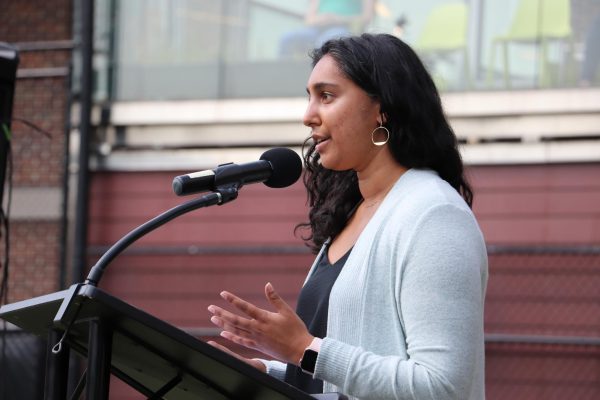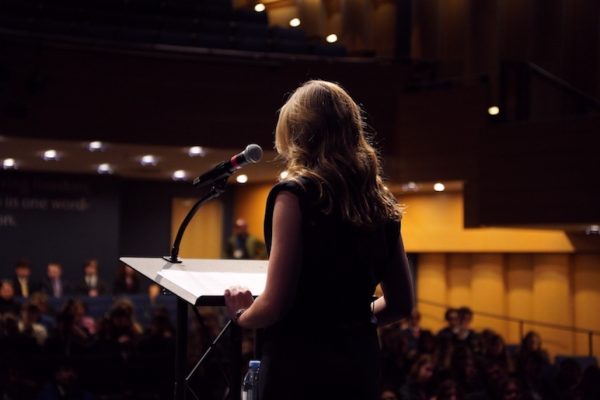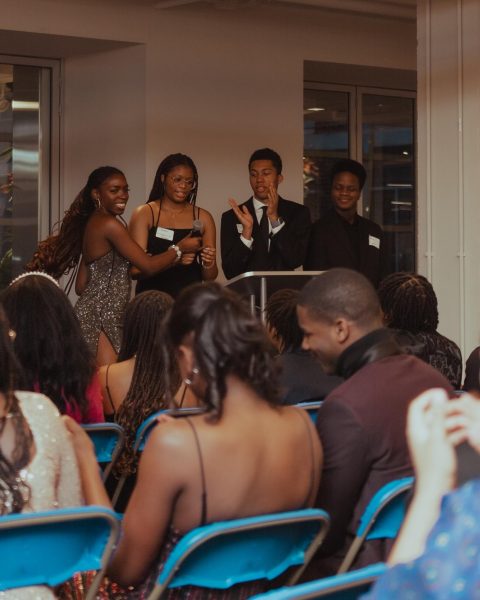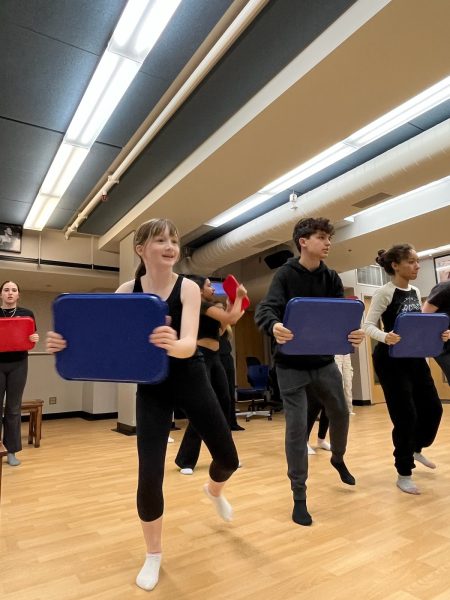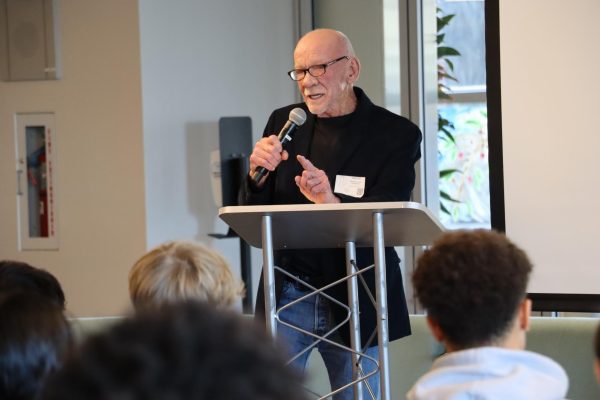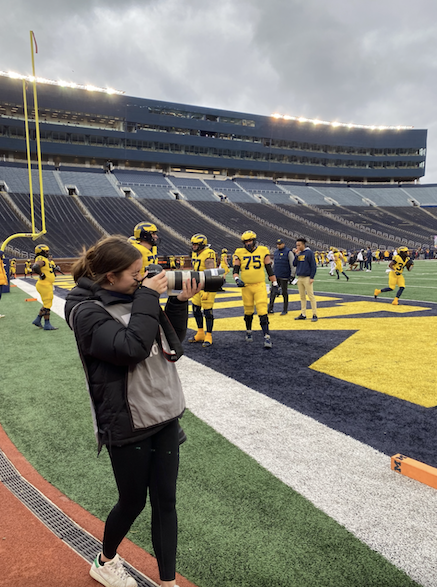Cubs Strike Out with New Lawsuit
Twenty year old Parker Alum David Cerda ‘16 has long enjoyed heading to Wrigley
Field, a stadium adorned in red, white, and blue, to cheer on his favorite sports team. And for years, Cerda has enjoyed Wrigley’s hot dogs and choruses of “Take me out to the Ball Game” from directly behind home plate. But recent renovations to the field mean that Cerda can no longer enjoy humid summer afternoons this way.
Cerda–who was diagnosed with muscular dystrophy at ten years old and has since been in a wheelchair–is alleging in a lawsuit, filed in December of 2017, that the renovations that have been taking place the past four years at Wrigley Field have eliminated previous handicapped-accessible seating in the right field bleachers, in violation of federal law. Cerda is not speaking to the press at this time.
“We first noticed that after rebuilding the left and right field bleachers, the seating area for wheelchairs in the right field bleachers was replaced with a bar,” Cerda’s father and lawyer, David A. Cerda, said. “And, there was no wheelchair seating in the bleachers except in center field behind dark glass. Which is like watching baseball on a dark T.V. The second thing we noticed is that the Cubs moved the rows of wheelchair seating back ten rows.”
After attending two post-renovation games in 2017, Cerda decided to file a lawsuit against the team. Cerda’s father, a police misconduct litigator, filed the lawsuit on his son’s behalf. Their aim, according to the elder Cerda, is to make wheelchair seating available in right field, left field, in lower box seats, and in the front row behind home plate.
The Cerdas believe the impetus behind the $750 million dollar renovation was financial, and as a result the seating is unaccommodating for some fans–and in violation of the Americans with Disabilities Act. The act requires that “wheelchair spaces be an integral part of the seating plan,” according to the lawsuit. The Cubs were unavailable for comment.
“It is a multiple violation,” David A. Cerda said. “One, overall, the accessible seating has to be an integral part of the seating plan. What’s happened is: parts of Wrigley Field are over 100 years old–they rebuilt the left and right field bleachers from the ground up, and they rebuilt the field box seats entirely. When they rebuilt it, they had to comply with the ADA standards of 2018, which weren’t in place 100 years ago. Wheelchair seating now needs to be in all areas with seating, including front row seating. If there is wheelchair seating in a certain row, you can’t move it backwards because that is making it worse. You don’t need to make the wheelchair seats the best seats in the house, but you cannot decrease their quality when renovating, which is what they did.”
The already limited handicap seats behind home plate were removed and reinstalled several rows back, making it impossible for fans in wheelchairs to enjoy the game due to the standing spectators directly in front of them, according to the lawsuit.
“In the right field bleachers, there was a community of people who used to go to the games, and that community was wiped out,” the elder Cerda said. “The seats now behind home plate are now more expensive than those in the right field bleachers. What happened is, the Cubs took the number of seats in the right field bleachers and shoved them along the third base line, and that’s now an area for standing people. So now you can’t see the ball when it goes up in the air while your sitting.”
Parker sophomore Andy Wessman, an avid Cubs supporter who attends an average of 20 games per season, is a fan of the renovations but understands that an ADA violation is a major problem. “I like the renovations,” Wessman said. “I’ve had no problem with them. I hadn’t heard about the lawsuit even as a devoted Cubs supporter, but I do think that there should be equal opportunity for all when it comes to seating.”
Cerda’s complaint is not the first when it comes to accessibility at Wrigley. In the past, wheelchair users have reported a lack of working elevators in the stadium, as well as extreme difficulty when it comes to making their way through narrow aisles to designated seats, according to the Chicago Tribune.
Marla Donato, a former reporter for the Chicago Tribune, was in a wheelchair for some months after she was in an accident that resulted in several surgeries to repair her leg and ankle. Donato was told at the box office that a seat near a bathroom would cost an extra $60, and she has not been back to the field since. Donato wrote an account of her experience for CityLab, an online development of the Atlantic.
This is not the first time the Cerdas have been at a disadvantage in a public place due to lack of accessibility. “Coincidentally, we went to a Paul McCartney concert, and our premium seats were behind a pole,” the elder Cerda said. “David could not see because they put the wheelchair seating in the back row off to the side. Only a couple wheelchair seats in the area had an unobstructed view, and the rest of us couldn’t see. This is in a building built after 1992, when accommodations for wheelchair areas were necessary.”
At present, the Cubs are in the fourth year of a five-year renovation project, which has added a video screen, an outdoor plaza, and a boutique hotel. So far, renovation plans have not included specific steps to increase accessibility in the stadium.
In the lawsuit, Cerda says that the ADA requires the team to “provide wheelchair spectators with choices of seating locations and view angles that are substantially equivalent to, or better than, the choices of seating locations and viewing angles available to other spectators.”
Specifically, Cerda suggests that the team place accessible seating in the left and right field bleachers, restore the lower box seating behind home plate, and construct front row seating. The lawsuit also asks for the Cubs to provide funds for Cerda’s legal fees.
“The Cubs have made a deceptive and deceitful motion to dismiss us, wrongly claiming that they are ADA compliant, and they will be more so after they finish renovations in time for the 2020 season,” David A. Cerda said. “We are in a very, very stark crossroads with the Cubs, as they have misrepresented what has happened. David filed his lawsuit in December, and since, the Cubs have asked for continuous time to respond for the complaint, and during this time they have started to construct new wheelchair seating in the left and right field bleachers in time for the 2018 season. They are claiming that because they did this, they are ADA compliant, which is a lie.”
The two Cerdas are continuing to pursue their lawsuit until the Cubs are in their view completely compliant with the ADA. According to Cerda’s father, the case could go so far as to result in the rebuilding of the entire stadium.






